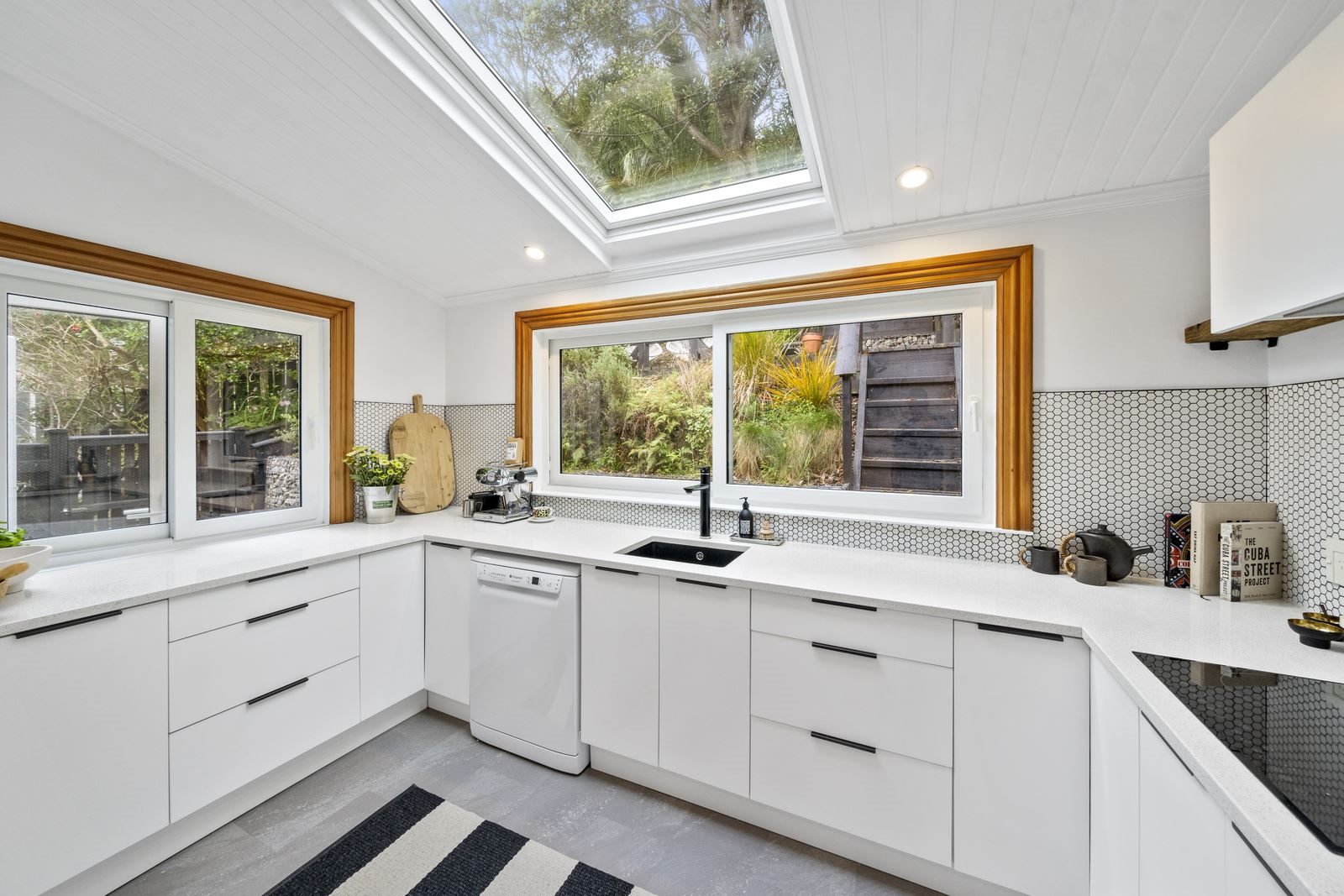Selling guide
4 tips for a warm and cosy home this winter
Improvements for selling your home during the winter seasons
It’s easy during the balmy summer months to forget about your home’s flaws in winter, the draughty room where you can feel a breeze around your ankles even though all the windows and doors are closed. Or the bedrooms where you wake with condensation on the windows and where you have to have a dehumidifier at all times.
But as chillier times are ahead, now is the time to take a hard look at your house, see where the draughts are coming from and figure out ways to make your home warmer and cosier as the dark evenings close in.
John Burgess, senior scientist at BRANZ says the biggest holes in an uninsulated house are the windows, the next biggest is the ceiling, then the walls.
Older houses have a big problem with air leakage, he adds. “With those rattly double hung windows, there’s a lot of air around the fascia and frame. And then floorboards let air through, you can see the dust move,” says John. Sound familiar?
Any good intentions of making your home warmer and dryer will begin with insulation in your roof. You may think you’ve got this covered, but if you haven’t checked on it in a couple of years, it might not be in such great shape.
A number of pests may be damaging your insulation as we speak. It could be vermin, or, more likely, an electrician or a cable layer has put some insulation aside to do work and then they haven’t returned the insulation to the way it was.
What’s going on under your house is a question well worth asking too. If you can, installing underfloor insulation is a good idea. Another thing to check, is there moisture coming up from the ground? If possible, see if you can grab a handful of dirt from beneath the house and see if it sticks to your hand. If it sticks, then it’s damp. You can either put polythene down under there or ventilate it, making sure air flows under the house. Make sure vents next to the house are not covered with plants and vegetation, advises John.
1. Recessed or downlighting the main cause of draught
Meanwhile, the BRANZ scientist says one of the biggest drains on warmth in a home is recessed lighting – it may look very smart but it lets out a whole lot of heat.
“Downlights are a pet hate of mine,” he says. “They never come in just ones or twos.”
Insulation around lights has gotten better over the years. Since 2011, they’ve been pretty good but if you’ve got downlights from the 70s or 80s, when you’re heating the house, the heat is often disappearing up there, warns John.
If yours were done more recently, chances are they’ll be better sealed and able to be covered with insulation but it’s something to check.
2. Is a big insulation job worth it?
You may look at your older house and think, it’s never going to be perfect, why bother? But those who do make a comprehensive job of it will have a home that others will only be too happy to snap up when the time comes.
In the case of a pretty Aro Valley double storey villa, currently on the market, the owners have done a thorough job. They insulated the walls and under the floor where they could get access. They replaced 16 windows and six doors with double glazing, installed central ducted air, a HVAC system with heat pump, replaced the water heater with a Rinnai gas Infinity system, put in all new carpets, and rewired the home putting in all LED lighting.
“The house stays warm and cosy even when it’s cold outside,” say the vendors, whose owner notes are a shining example of how to make buyers feel excited about a place.
27 Mortimer Terrace, Aro Valley
Harcourts agent Erin Rush, who’s marketing the Mortimer Terrace property, says when she’s selling a home in winter, buyers always want to know what sort of winter sun the home gets, as well as the insulation and any signs of damp. Some thorough buyers will want to see what the power bills are like too.
Skylights can be a great way of allowing more sun into a home, suggests Erin. They’re double glazed and relatively inexpensive, (around $3,000) and can make a massive difference, she says.
Skylights at 27 Mortimer Terrace, Aro Valley
3. Little things make a difference
If your budget or inclination isn't able to go as far as this Aro Valley couple, there are many small things you can do.
The Energy Efficiency & Conservation Authority has an excellent website, Gen Less which lists some great ideas to help block draughts and close gaps so warm air doesn’t escape.
Tightening loose hinges, catches and latches on windows and doors are one suggestion as well as sealing door and window trims and using a clear or paintable sealant to make them weather resistant.
Another area to seal are skirting boards and cornices with flexible silicon based or latex sealants, says the EECA linked website.
BRANZ’s John Burgess also advises wrapping your hot water cylinder with a blanket or foil or both.
And if you’re feeling a draught from a skirting board, it’s probably covering an average sealing job, says John.
Another easy fix if you have a chimney that you’re not using, is to block it and put in a flue, a duct or pipe which helps carry out exhaust gases from the fireplace. If you block the flue you shouldn’t have a draught.
And some old tricks still work. In the 1960s, people used to put snake draught stoppers at the front door and this still works as long as you follow where the draught will go. Put a snake draught stopper at the back door too to make a real difference, suggests John.
And don’t get too used to things like dehumidifiers, says the BRANZ scientist. They’re a symptom of a problem, a bit like cold medication you use for a cold, he argues. You’re treating the symptom of the house. It’s not a long term plan.
Double glazing is something to consider even if it’s bit-by-bit when you can afford it.
“There are some phenomenal glazing systems that work ten times better than older windows, they’re a huge improvement,” says John.
4. Keep on top of home maintenance
Home inspectors see the result of homes that haven’t been well cared for and kept warm and dry every day.
Realsure director, Sarah Symon says it’s super important to do your maintenance of the home envelope.
“Fix roof screws, clean back rust, fix any cracked tiles, and make sure the roof’s not keeping in water,” she advises. Also, get your gutters cleaned quarterly, she recommends, because otherwise they can cause leaks into the house.
Then, inside the house, make sure that the window hinges are free of rust so the joinery is shutting properly.
Outside, with foundation vents, make sure they’re clear of the ground so they’re not causing water to enter the foundations. Keeping the foundations dry is a big thing, a huge amount of moisture comes into the house from the foundations, she says.
Sarah remembers getting sick every winter after they moved to their 1940s Wellington home which she and her husband, Bruce, planned to renovate. They put in insulation under the floors, put better curtains in, took out the freestanding gas heaters and put in heat pumps. It made such a difference, she says.
They also put foam seals around the original joinery to stop the cold air coming in.
The Realsure director cautions there’s a lot of poor insulation installation done, so find someone who has a good reputation and has been recommended to do the job.
Discover More
Search
Other articles you might like









